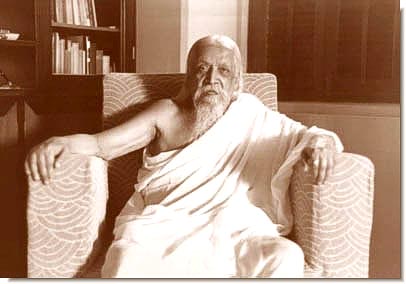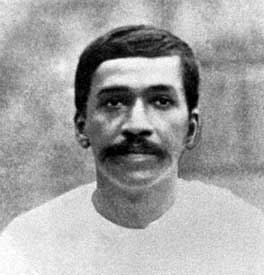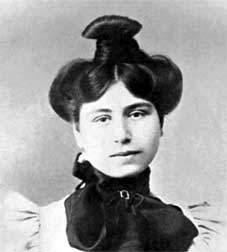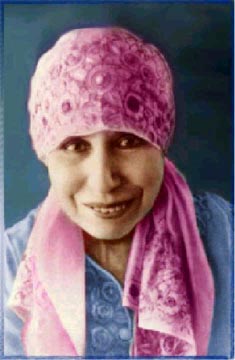Jan 02, 2026
Jan 02, 2026
 In the realm of spirituality, Sri Aurobindo remains an enigmatic Indian personality and philosopher. He is one of the giants of modern Indian spirituality, who along with Vivekananda, Tagore, Gandhi and Radhakrishnan, was responsible for putting forth Indian philosophy in a comprehensive modern context, which then could be understood by the Western world at large. Sri Aurobindo's work is the least known of these five, but his teachings of philosophy and spirituality have the wisdom and appeal for a longer survival, similar to those of Vivekananda. Sri Aurobindo's evolution of consciousness was his life's experience that he documented in series of writings, in the process offering the world a critical and original philosophical system.
In the realm of spirituality, Sri Aurobindo remains an enigmatic Indian personality and philosopher. He is one of the giants of modern Indian spirituality, who along with Vivekananda, Tagore, Gandhi and Radhakrishnan, was responsible for putting forth Indian philosophy in a comprehensive modern context, which then could be understood by the Western world at large. Sri Aurobindo's work is the least known of these five, but his teachings of philosophy and spirituality have the wisdom and appeal for a longer survival, similar to those of Vivekananda. Sri Aurobindo's evolution of consciousness was his life's experience that he documented in series of writings, in the process offering the world a critical and original philosophical system.
In his formative years, Aurobindo surmised that the oppression of Indian thought by the ruling British had deleterious effects on it. He thus became a revolutionary inCalcutta, working against the British rulers. Four years before Gandhi started political revolution in India, Sri Aurobindo had spent time in Alipore jail in the year 1910, charged with sedition and conspiracy. In the prison, Sri Aurobindo experienced the strength of his inner consciousness and emerged as a spiritual Yogi. His Ashram in Pondicherry has survived until today under the guidance of the spiritual Mother.
It is intriguing as to how a boy, who was being groomed to become an 'English Gentleman' by his father (who seemed to loathe anything 'Indian') could transform into a revolutionary freedom fighter first, and then a premier world renowned Yogi, with his own brand of spirituality and philosophy. His life-changing experience, according to him, was a result of an inner consciousness that took shape long before it could be expressed to the outer world. This perhaps explains his intuitive affinity towards his motherland, the culture of which was foreign to him during his childhood.
Formative Years
Sri Aurobindo was the fourth child of Dr. Krishnadhan Ghose, a surgeon, who was a District Medical Officer at Khulna, East Bengal, and Swarnalatha Devi Ghose. He was originally named Aravinda Ackroyd. He was born on August 15, 1872 (that date was to become very significant in Indian history, seventy-five years later). At age five he was sent to Loretto Convent School in Darjeeling for two years. He then was sent to Manchester, England, to be home-schooled by the Dewett family until he was twelve years old. High school was finished in St. Paul's School in Cambridge followed by two years of college at King's College, Cambridge (1890-92).
 While at college he addressed the Indian student group called Indian Majlis and advocated freedom for India from the British. His formative years had been spent with a culture alien to India, educated by the Irish nuns of Darjeeling first, and then by the ministers and dons of the Church of England. By the time he finished college he could speak English and French fluently and also could read Greek, Latin and Italian. He could manage to speak Bengali, his mother tongue, only a bit.
While at college he addressed the Indian student group called Indian Majlis and advocated freedom for India from the British. His formative years had been spent with a culture alien to India, educated by the Irish nuns of Darjeeling first, and then by the ministers and dons of the Church of England. By the time he finished college he could speak English and French fluently and also could read Greek, Latin and Italian. He could manage to speak Bengali, his mother tongue, only a bit.
His affinity for his motherland had been kept alive by a radical newspaper, The Bengalee, which published articles about maltreatment of Indians in the hands of Englishmen. The paper was committed to Indian independence from the British and this fanned the affinity Aravinda Ackroyd had for his motherland, and gave him a patriotic sense of belonging. He returned to India in 1893 with great anticipation. Upon reaching the shores of Bombay, he had an intense and profound spiritual experience, 'a calm that lasted for several months' - as he would later recount.
Parallel Course of Politics and Spirituality
Aurobindo had already dropped the name Ackroyd and joined the service of Maharaja of Baroda. He taught English and French at Baroda College and later became Vice-President of the College. During his twelve year tenure in Baroda, Aurobindo learnt many Indian languages. He became fluent in Sanskrit, Marathi, Gujarati and Bengali. In April 1901 he married Mrinalini Bose, a pious Hindu, barely half his age. While at Baroda he wrote a series of literary works, translations and political commentaries which gave him the ability of raising the consciousness of Indians, both in the political and social circles. His own mental development seemed to have progressed along two prongs. He was having unexplained spiritual experiences, seemingly accidental that pushed him more and more towards spiritual quests of higher levels. These experiences were enhanced by his meetings with Sister Nivedita in 1902 and an experience of 'the vacant Infinite' at the Sankarachaya hill in Kashmir in 1903.
Mrinalini Bose, the young wife of Aurobindo had not been able to join in her husband's spiritual journey, and their differences became more than just the differences in their ages, as he became more involved in politics and yoga. Five years after his marriage to her, he wrote to her saying that he was suffering from madness. He categorized his madness at three levels. First, was that he realized his talents and resources had to be used for one purpose only i.e. for God's work. His second madness he describes as his quest to have a direct 'Realization with God'. Thirdly, to him India was the Mother, the divine embodiment of sakti that propelled him towards politics.
Politically Aurobindo was becoming more and more determined to help the cause of independence for Indians from the British. He was convinced that the Western influence on the Indian mind was an impediment for the Indian spiritual maturity. He moved to Bengal in 1906 to become the principal of Bengal National College. Here he joined secret political societies, and orchestrated an underground organization with printing of anti-British pamphlets. The same year he assisted Bipin Chandra Pal in founding the radical newspaper, Bande Mataram. Later, he took over the editorship of the newspaper and succeeded Bipin Chandra Pal as the leader of National Party in Bengal. He wrote several articles including the one called 'The Doctrine of Passive Resistance,' that later became the main instrument of Gandhi in his freedom struggle to oust the British from India. For his article in Bande Mataram, he was arrested in 1907, on charges of sedition and then released on bail.
Even in his development as a political revolutionary, Aurobindo went through several evolutions as well. First he was the secret revolutionary, advocating and preparing for an armed insurrection. Secondly, he undertook the task of convincing the nation that its citizens deserved and could attain independence. The country was in a state of forced subjugation, and thought that the British were too powerful and Indians too impotent to dream of independence. Moreover, Indians were under the impression that the lofty idea about independence was impractical, unattainable and almost an insane chimera. Lastly, Aurobindo had come a full circle when he wrote articles and assisted in organizing people to passively resist and practice non-cooperation.
Aurobindo resigned from Bengal National College and became a leader of the nationalist movement, giving several speeches both in Bengal and Western India. In January of 1908 he met Vishnu Bhaskar Lele, a yogi in Baroda, who taught him the technique of silencing the mind and experiencing the timeless Brahman, a form of spiritual Realization.
He was again arrested in 1908 in connection with Alipore conspiracy case and spent a year in jail, including in solitary confinement. He utilized his time in jail studying the Geeta, meditation and practice of yoga. After his acquittal, he started publications of two weeklies - Karmayoga in English and Dharma in Bengali. During his stay in Calcutta for a period of five years as a revolutionary leader, Aravinda Ghose tried to prove to the Indians that a politically oppressed population could not express its distinctive spiritual and cultural genius. Move to Pondicherry
Aurobindo had concluded that independence for India was inevitable, and he then embraced the spiritual evolution of the soul with the same fervor as he had in raising the consciousness of Indians.
 In the year 1910, when Aurobindo was 37 years old, he abruptly withdrew from active politics and moved to Pondicherry to continue his spiritual work. There he met Paul Richard, a French diplomat who became an ardent fan of Aurobindo. Mira Richard, ** his wife was a spiritual personality (born Mira Alfassa on February 21, 1878 in Paris), who had mystic and psychic experiences during her adolescence. After hearing about Aurobindo she met him in 1914, an encounter instantly and profoundly spiritual for both. Mira Richard was to become “Mother” later, a symbol of sakti who was to play a central role in the creation of the Aurobindo Ashram and Auroville in Pondicherry. Mira Richard saw Aurobindo as the divine hero of tomorrow and hope for all humanity. The day after her meeting with him she wrote in her diary:
In the year 1910, when Aurobindo was 37 years old, he abruptly withdrew from active politics and moved to Pondicherry to continue his spiritual work. There he met Paul Richard, a French diplomat who became an ardent fan of Aurobindo. Mira Richard, ** his wife was a spiritual personality (born Mira Alfassa on February 21, 1878 in Paris), who had mystic and psychic experiences during her adolescence. After hearing about Aurobindo she met him in 1914, an encounter instantly and profoundly spiritual for both. Mira Richard was to become “Mother” later, a symbol of sakti who was to play a central role in the creation of the Aurobindo Ashram and Auroville in Pondicherry. Mira Richard saw Aurobindo as the divine hero of tomorrow and hope for all humanity. The day after her meeting with him she wrote in her diary:
“Little by little the horizon becomes precise, the path becomes clear. And we advance to an even greater certitude. It matters not if there are hundreds of beings plunged in densest ignorance. He whom we saw yesterday is on earth: His presence is enough to prove that a day will come when darkness shall be transformed into light, when Thy reign shall be indeed established upon earth.”
In 1915 Paul and Mira Richard returned to France and later went to live in Japan until 1920. Then Mira sailed to Pondicherry to begin her spiritual mission with the man she saw as an avatar of the Divine. She stayed in Pondicherry in a journey with Aurobindo, where each became integral part of their quest – he as the Divine Yogi and she as the Mother sakti.
After being estranged from him for more than ten years, in 1918, the ill-fated Mrinalini, Aurobindo’s wife, finally decided to go to Pondicherry to join her husband. As fate would have it, they were never meant to see each other again. She was about to embark on her journey to Pondicherry, when she contracted influenza and died.
Sri Aurobindo lived in Pondicherry until his death on December 5, 1950 at the age of seventy-eight. India attained independence that he had dreamed of, on August 15, 1947, coincidentally on his seventy-fifth birthday. The date did not go unnoticed by Sri Aurobindo. He mentioned it in his speech to the nation after attaining independence. He was a satisfied man, to find India finally rid itself of foreign occupation, a task he had worked so ardently during his younger years.
A Personal Journey
While Indian philosophers like Radhakrishnan, Bhattacharya and Dutta have put forward comprehensive systems of Indian philosophy, they pale in comparison to Aurobindo’s richness in detail and range of topics, as evident in his vast array of writings. Moreover, Aurobindo’s system of philosophy is autobiographical, an account of his personal experience and experiment. As he became more and more knowledgeable during his personal journey of his spiritual quest, he did not hesitate to continually revise his earlier writings and teachings. Savitri: A Legend and a Symbol, Sri Aurobindo’s 24000 line epic poem about spiritual ascent and transformation of the physical world, was revised and added on to until the last days before his death. He also revised his other writings, notably The Life Divineand The Synthesis of Yoga, in order to express his more advanced experiences of his later years. All of his works except Savitri (namely The Essays on the Gita, The Human Cycle, The Ideal of Human Unity, The Secret of the Veda, and The Life Divine as well as The Synthesis of Yoga) were serialized in his philosophical publication Arya. Here he put forward comprehensive and systematic philosophical compilations based on his own personal experiences. Unlike Ramakrishna, Ramana Maharshi, Sivananda and J. Krishnamurti, who also expressed their experiences in philosophical terms, Sri Aurobindo was successful in developing an original critical and practical philosophical system, including theories of knowledge, existence, the self, natural order and the aim of life.
Integral Yoga and Religion
At least since 1926 his spiritual eminence was well recognized and the suffix ‘Sri’ had been added to his name. It was the same year when he withdrew completely, claiming day of siddhi (day of victory), and left the chores of establishing the Ashram and the management of the disciples to Mother. Through his four decades of practice of yoga (sadhana), Sri Aurobindo had published thirty volumes of systematic writings and correspondence. He consistently distinguished his spiritual discipline from traditional religion. He was worried that his work could some day be mistaken for a new religion and repeatedly asserted that he did not want it to be so. Perhaps he did not want his teachings to be construed in a religious sense akin to what developed from profound spiritual experiences of Gautama (Buddhism) and Jesus (Christianity), much after their passing.
“Our goal is not…. to found a religion or a school of philosophy or a school of yoga, but to create a ground and a way which will bring down a greater truth beyond the mind but not inaccessible to the human soul and consciousness….”
Sri Aurobindo believed in the creation of Divine life, in the existing human life, in its current form. He believed that it was not inaccessible for an ignorant mind, through discipline, to bring down a greater Truth from beyond, to the human consciousness. It is not only possible to rise out of the ignorant world-consciousness, but it is also possible to bring the supramental powers down (a descent) to the ignorant mind. This can only help in the transformation of ignorance of the mind, body and life, in order to manifest the Divine here, while on earth.
Religion to him was an anathema. He however conceded that religion could be used as the first step toward achieving the supramental enlightenment. He made a clear distinction between religion and the spiritual. To Sri Aurobindo it was clear that there were three paths a human could take in his journey through life; A spiritual journey (adhyatma-jivana), a religious journey (dharma-jivana), or a journey of ordinary human life (of which mortality is a part). The laws of ignorance guide the ordinary life of average human consciousness. It is separated from its own true self and from the Divine. The religious life is led by some sect or creed that claims to have found the way out of the bounds of earth-consciousness into some beatific Beyond. The religious life is as ignorant because it often is only mired in rites and rituals, ceremonies and practices or set ideas and forms, without any attempt at dispelling ignorance. The spiritual life, in contrast, proceeds directly by a change of consciousness, wherein one finds one’s true self and comes into direct and living contact and into union with the Divine. For the spiritual seeker this change of consciousness is the one thing he seeks and nothing else matters.
Aurobindo taught us the possibility of transformation of the world-consciousness through a spiritual journey of discipline and yoga. Though the potential is inherent in all, it is a receptive mind that through discipline can grasp the profound and succeed in attaining Realization. In his series of articles that became increasingly more informative as his consciousness matured, he showed us his way of self discipline through integral yoga. He never discounted the fact that this realization is possible for the ignorant during one’s lifetime. He used Mother to achieve his own personal spiritual journey (and vice versa), and considered Mother as an expression of his own consciousness. But it was the Mother who was truly the chief organizer of the Ashram in Pondicherry.
The Mother: Architect of the Future
 In 1951 Mother founded the Sri Aurobindo International University to modernize and expand the scope of the Sri Aurobindo Ashram in Pondicherry. In this endeavor she also established the Sri Aurobindo Ashram, Delhi Branch together with Surendranath Jauhar in 1956. The Mother's International School, which is also located in the Sri Aurobindo Ashram (Delhi Branch), has since grown into one of the biggest and most important schools of its kind in India.
In 1951 Mother founded the Sri Aurobindo International University to modernize and expand the scope of the Sri Aurobindo Ashram in Pondicherry. In this endeavor she also established the Sri Aurobindo Ashram, Delhi Branch together with Surendranath Jauhar in 1956. The Mother's International School, which is also located in the Sri Aurobindo Ashram (Delhi Branch), has since grown into one of the biggest and most important schools of its kind in India.
There was a danger that after his death, his teachings might not have the same appeal. However, Mother and his other disciples successfully ran the Ashram in Pondicherry and then in 1968, at the age of ninety, Mother began the Auroville project (with the architect Roger Anger), in expectation of a new species of enlightened humans, and to accommodate such species. “A new species of higher consciousness will be revealed to us, little by little and Auroville wants to consciously hasten that advent. Auroville wants to be the bridge between the past and the future. Auroville belongs to no one and belongs to humanity as a whole. To live in Auroville, one must be a willing servitor of Divine Consciousness.”
It is here where Aurobindo’s vision of spiritual discipline and selfless action (Karmayoga) are implemented. In addition, on Mother’s commission, cyber-artist, musician and futurist Michel Montecrossa established Mirapuri center in Italy, which is actively spreading the ideals of Sri Aurobindo in the international scene. A Miravillage, a satellite of Mirapuri is also attracting disciples in Germany.
Then in 1973, the year she died, she also gave her blessings to Michel Montecrossa to establish a cultural center and guest house for the Friends of Mirapuri in Auroville. It is named 'New Community' and is located in the Auroville settlement 'Certitude,' opposite the building called 'Auroson's Home'.
Throughout her life she wanted to create a new type of city for all those who wanted to develop their consciousness for a spiritually inspired evolution. In 1957 ideas for such a township again were in the air but did not materialize. In 1967 plans were made and some land acquired to found a city in the Indian state Gujarat, which she named Ompuri. This project also did not move further. There have been other disappointments. In 1982, an organized attack on Auroville by violent and sectarian movement that halted all progress at Auroville and its promise of becoming a place of peace for world unity as envisaged by the Mother came to an abrupt halt. This led to the creation of Mirapuri, that later opened its branches in Italy and the Miravillage in Germany.
The Mother continued the work of Consciousness Evolution, leaving a stunning legacy of wisdom, knowledge, realization and impulses for making the Integral Yoga physically effective, in a life where Spirit and Matter are one. Mother died in 1973 at the ripe age of ninety-five, twenty three years after the Master had passed on. Sri Aurobindo’s legacy and teachings have survived and are thriving internationally today, thanks to the brilliant planning and forethought of the Mother.
** Mira Alfassa (Richard) studied art and became an accomplished artist and musician. 1897 she married Henri Morisset and gave birth to her son André. In 1905 she began to study parapsychology and occult sciences in Algeria together with Max Theon and his wife. After her divorce from Henri Morisset she founded a group of spiritual seekers, which was named l'Idée Nouvelle.
In 1911 she married Paul Richard and traveled to India with him, where she met Sri Aurobindo for the first time in 1914, and started together with Sri Aurobindo and Paul Richard the journal 'Arya', which became the birth place for most of the writings of Sri Aurobindo, which later appeared in book-form.
Till 1920 Mira Alfassa stayed in Japan and then came back to India to live with Sri Aurobindo. They both collaborated to further develop the Integral Yoga. Sri Aurobindo and Mira Alfassa founded the Sri Aurobindo Ashram in 1926 to accommodate the growing number of people who became interested in the Integral Yoga. After 1926 Mira Alfassa became known as The Mother, the individual expression of the power of spiritual consciousness.
01-May-2005
More by : Dr. Neria H. Hebbar

|
appreciable |

|
Reading this, I feel as if a piece of me has finally come :home: Thank you! |